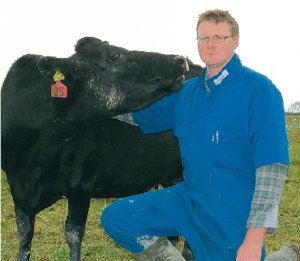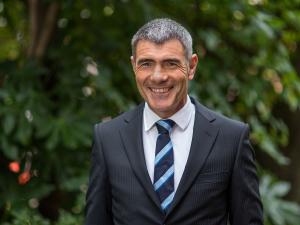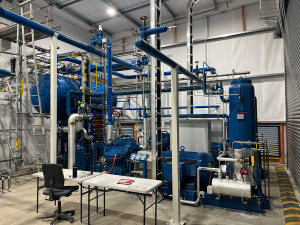He’s just had a record season producing 96,000kgMS but Connor and his wife Liza, beginning their 4th season on this particular farm have taken the unusually good season in their stride and directed much of their attention to planning for new season.
Connor hails from Pahiatua and spent time in Canterbury managing a 1300-cow herd. But because the herd size in Canterbury is 400-500 and therefore costly, he and Liza decided to come north and take on a small herd to build up their equity.
While Connor aims to get the best milk solids production out of his herd, he’s equally conscious of not pushing the herd too hard even in a good season. “I’ve probably been a bit more conservative in the past year. We had a great season and we could have probably had an even better season. But I pushed some of that resource forward into the new season in the form of feed and body condition... to make sure I have another good year, rather than have one fantastic year and, when the next one turns out a bit tough, a really bad year.”
His strategy is based on cows calving with a high body condition score (BCS). To this end he reverts to once-a-day milking from March 1. “The aim is for my cows to have a BCS of 5.0 and certainly nothing under a 4.5. Right now all my cows have BCS 5.0 and certainly no cows would be under 4.5 which is important. Averages are fine, but to me the actual number at the bottom end is what’s important.”
Connor likes to try to look at the wider picture and not just one season in totality. “It’s easy to rob production from the next season over the previous season and have a good year. I could run my cows down to be skinny, use up all my grass and reserves and have nothing left for next year and say ‘oh look what a great farmer I am this year.’ But the next year we won’t talk about that.”
To maintain his cows at a high BCS, Connor has been focusing on the myriad of tasks needed to achieve this. “The cows are about to go through one of the hardest times of their lives in the next 12 months. So as well as feeding them well I’ve been ensuring their mineral levels are right. I’ve done blood tests to check for copper, cobalt and selenium and dosed accordingly as well as supplementing with magnesium now. We began dusting three weeks before calving. It’s important to realise cows can’t store magnesium, not like selenium and cooper so we have to dust every day.”
It will be a compressed calving period for Connor. He’s adopted a ‘why wait’ maxim to get his cows and heifers to cycle a week earlier so he’ll effectively calve three weeks of cows in two weeks. This means the first of the heifers will calve before the first of the older calvers.
Already Connor has feed budgeting at the top of his agenda. He starts with a 100-day rotation plan which will reduce to a 25-day rotation by late September. He’ll be plotting throughout the year to make sure his cows’ needs are met. Bailage and silage are grown on the farm’s 34ha run-off block which Connor says is a huge advantage because they are able to harvest it when they want to. Because of the wet summer/autumn they have tended to harvest mainly bailage. From now on the cows will be fed the silage, bailage and some hay. They’ll also get 2kgPKE/day from now until about November.
This season’s lower payout does have an effect on how Connor runs his business. “You’d like to think the things you’re doing need to be done and you’re not wasting money. But whenever a pinch happens financially you look a bit harder and ask, ‘Am I getting the return on the money I’m spending?’ ”
Connor recognises this past season has been “awesome” but has still set his sights high for the coming season. “I’d hope to do [96,000kgMS] again.”
















